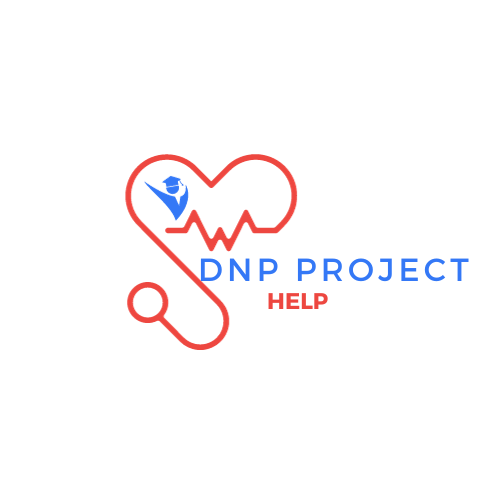
Exploring the realm of DNP-835A Patient Outcomes and Sustainable Change with insights and guidance from DNP Project Help. In this course, the focus goes beyond healthcare knowledge – it’s about improving patient outcomes and ensuring lasting positive changes in the field.
In simple terms, DNP-835A is all about understanding how our actions as nurses can really help patients. We’re going to explore smart and lasting ways to improve patient care. It’s like learning the superhero moves of nursing – making things better and making sure those improvements stick around for the long run.
So, get ready to join us on this journey where we’ll break down the complexities, learn practical skills, and work together to create positive changes that make a real difference in patient outcomes. Here at DNP Project Help, we’re here to guide you in becoming a superhero for patients and a driving force for positive change in healthcare. Let’s get started!
Course Objectives for DNP-835A Patient Outcomes and Sustainable Change
DNP-835A Patient Outcomes and Sustainable Change, often tailored to meet the specific needs of different institutions, shares a common goal of transforming nursing practice. As we embark on this academic journey, let’s unravel the core objectives that underscore the significance of this course, aiming to enrich students with knowledge and skills pivotal for navigating the complex terrain of healthcare.
Critical Evaluation of Patient Outcomes
At the heart of DNP-835A lies the objective to equip students with the ability to critically evaluate patient outcomes. This goes beyond the surface level of understanding – it’s about delving deep into the data, dissecting the factors contributing to patient outcomes, and identifying areas that call for improvement. By honing this skill, students become adept at assessing the effectiveness of healthcare interventions, ensuring that their nursing practice is not only compassionate but also continually refined for optimal patient outcomes.
Tools and Frameworks for Quality Improvement Initiatives
The course strives to provide students with a toolbox of tools and frameworks designed for the intricate art of quality improvement. It’s not just about knowing what needs improvement; it’s about having the practical know-how to design, implement, and evaluate initiatives that elevate the quality of care. Through this objective, students gain the competence to initiate positive changes that ripple through healthcare settings, ultimately enhancing the overall patient experience.
Leadership Skills for Sustainable Change
DNP-835A recognizes the transformative potential of nursing leaders. The objective here is clear – to develop students’ leadership skills for promoting sustainable change within healthcare systems. Leadership in nursing is not just about managing; it’s about inspiring positive shifts, fostering collaboration, and steering the ship towards a future where patient care is not just improved momentarily but is sustained over time. This objective ensures that students emerge as influential leaders capable of steering healthcare systems towards enduring positive change.
Utilization of Data Analysis and Evaluation Methods
In an era dominated by data, DNP-835A understands the critical role of data analysis and evaluation. This objective focuses on enhancing students’ ability to not just collect data but to extract meaningful insights from it. By learning sophisticated analysis methods, students become proficient in assessing the impact of change initiatives. This skill is invaluable, providing a scientific lens through which students can navigate the dynamic landscape of healthcare, ensuring that their interventions are not only well-intentioned but are also supported by robust evidence.
Dissemination of Knowledge and Findings
The journey doesn’t end with acquiring knowledge; it extends to sharing that knowledge with the broader healthcare community. This final objective prepares students to disseminate their insights, findings, and innovations. Whether it’s to colleagues, stakeholders, or the wider public, effective dissemination ensures that the impact of their work transcends individual patient interactions. Students are empowered to be ambassadors of change, contributing to a culture of continuous improvement in nursing practice.
In essence, DNP-835A is designed to be a catalyst for holistic growth in nursing practice. Through these objectives, students not only gain a profound understanding of patient outcomes but also develop the practical skills and leadership acumen needed to drive sustained positive change in healthcare systems. The course stands as a beacon, guiding students towards becoming not just skilled practitioners but dynamic leaders capable of shaping the future of nursing.
What topics are covered in the DNP-835A Patient Outcomes and Sustainable Change course?
DNP-835A Patient Outcomes and Sustainable Change is a course that teaches nurses how to make things better for patients. It’s not just about learning stuff—it’s about turning what you learn into real changes that make a lasting impact. In this course, you’ll dive into how to measure how well patients are doing, find ways to improve their care, and make those improvements stick. Here’s a taste of what you’ll explore:
- Conceptual Foundations of Patient Outcomes and Sustainable Change
First up, we’re digging into the roots – the big ideas that make patient outcomes and change happen. We’ll explore the concepts behind why some things work and how we can make them stick around. It’s like understanding the magic behind the scenes in the world of nursing.
2. Quality Improvement Methodologies and Implementation Science
Next on the list – quality improvement. It’s not just about doing things; it’s about doing them better and smarter. We’ll show you the ropes of quality improvement – how to make changes that really count. Think of it like upgrading our superhero gadgets to ensure they’re top-notch and always improving.
3. Leadership for Change and Managing Resistance
Ever wanted to be the leader who brings positive changes? This part is all about superhero leadership. We’ll talk about how to lead the charge for good changes and even handle a bit of resistance. It’s like learning the super moves to lead your team in making things better for everyone.
4. Data Analysis and Evaluation for Patient Outcomes
Numbers can be tricky, but fear not! We’re breaking it down. This part is like your superhero training for dealing with data. We’ll teach you how to look at numbers, understand them, and use them to figure out if our changes are really making a difference. It’s like having a special power to see the impact of what you’re doing.
5. Sustainability and Dissemination of Change Initiatives
Now, we’re talking about keeping the good stuff going. Sustainability is like making sure our superhero powers stay strong. We’ll chat about how to keep the positive changes lasting. Plus, we’ll discuss how to tell everyone about the awesome things you’re doing – it’s like spreading the word about your superhero deeds!
DNP-835A Patient Outcomes and Sustainable Change Modules
DNP-835A-1-Module 1: Conceptual Foundations of Patient Outcomes and Sustainable Change
- Defining patient outcomes and their significance in healthcare
- Frameworks for measuring and evaluating patient outcomes
- The role of evidence-based practice in improving patient outcomes
- Factors influencing patient outcomes, including individual, social, and system-level factors
DNP-835A-2 Module 2: Quality Improvement and Implementation Science
- Principles of quality improvement methodologies, such as Lean, Six Sigma, and PDSA cycles
- Strategies for designing, implementing, and evaluating quality improvement initiatives
- The role of implementation science in translating research into practice
- Ethical considerations in quality improvement and patient safety
DNP-835A-3 Module 3: Leadership for Change
- Leadership theories and styles for fostering sustainable change
- Strategies for building collaborative teams and engaging stakeholders
- Managing resistance to change and overcoming barriers to implementation
- Developing effective communication and conflict resolution skills
DNP-835A-4 Module 4: Data Analysis and Evaluation
- Methods for collecting, analyzing, and interpreting patient outcome data
- Statistical techniques for measuring change and impact
- Developing a data-driven culture for continuous quality improvement
- Using data to inform decision-making and resource allocation
DNP-835A-5 Module 5: Sustainability and Dissemination
- Strategies for sustaining change and preventing initiative failure
- Developing plans for dissemination and knowledge sharing
- Evaluating the long-term impact of quality improvement initiatives
- Promoting sustainability through policy advocacy and organizational change
Other DNP 835 Patient Outcomes and Sustainable Change Topics
DNP 835 Topic 1 Individual Success Plan
DNP 835 Topic 1 Individual Success Plan
The Individual Success Plan (ISP) in the Doctor of Nursing Practice (DNP) program is a critical tool for doctoral learners to map out their journey, aligning programmatic requirements, competencies, and Direct Practice Improvement (DPI) Project milestones. This collaborative assignment with course faculty ensures a tailored approach to success. This essay provides an overview of the ISP process and its significance in navigating the program’s complexities.
The ISP begins with locating and downloading the document from the DNP Program Documents folder, emphasizing the learner’s responsibility to engage with program resources actively. Learners must familiarize themselves with the DNP Program Milestones, linking them to the current course requirements and determining applicable competencies. This mapping facilitates a clear trajectory for achieving program goals.
Central to the ISP is the identification of practice experiences addressing each competency. Learners must articulate the number of hours allocated to meet their goals, incorporating concepts from core courses and scholarly readings. The ISP serves as a personalized roadmap, outlining major milestones, deliverables, and specific goals. It encompasses elements such as individualized DNP practice immersion contracts, clinical logs, learner and mentor evaluations, CV updates, scholarly activities, and DPI project milestones.
In this iterative process, learners forecast challenges they may encounter in meeting practice hours and competency requirements. These challenges could range from time constraints to the complexity of scholarly integration. Identifying these challenges allows learners to proactively strategize on overcoming them, fostering a realistic and pragmatic approach to their academic journey.
The ISP is not static; it evolves with the learner’s progress. Learners can renegotiate deliverables with faculty, reflecting the dynamic nature of doctoral education. Regular updates ensure alignment with changing goals and emerging insights gained during the academic journey.
In conclusion, the ISP is a foundational tool in the DNP program, fostering collaboration between learners and faculty to chart a course for success. By integrating competencies, practice hours, and DPI milestones, the ISP becomes a dynamic guide, adapting to the evolving needs and aspirations of the learner.
DNP 835 Topic 2 DQ 1 Describe the role of the DNP-prepared nurse in managing costs
The evolving landscape of healthcare demands strategic management of costs to ensure optimal patient outcomes and resource allocation. Within this context, the Doctor of Nursing Practice (DNP)-prepared nurse assumes a pivotal role in steering healthcare organizations toward financial sustainability through advanced education, evidence-based practices, and innovative care delivery models.
DNP-prepared nurses leverage their enhanced education and training to proactively manage costs. One primary aspect of their role involves the implementation of evidence-based practices. By staying abreast of the latest research and healthcare innovations, DNP-prepared nurses can introduce efficient and cost-effective interventions. This includes adopting clinical protocols and care delivery models that have proven efficacy in improving patient outcomes while curbing unnecessary expenses (Hamric, Hanson, Tracy, & O’Grady, 2019).
Technological integration is another avenue through which DNP-prepared nurses contribute to cost management. Embracing digital solutions for communication, data management, and telehealth enhances efficiency, reduces redundancies, and minimizes administrative costs. Utilizing technology not only streamlines healthcare processes but also fosters better communication among healthcare teams, ultimately benefiting patient care and financial sustainability (American Association of Colleges of Nursing [AACN], 2006).
Furthermore, the role of DNP-prepared nurses extends to the development of innovative care delivery models. By thinking creatively about how healthcare services are organized and delivered, these nurses can identify opportunities to enhance efficiency and reduce costs. This may involve implementing new care coordination strategies, exploring alternative staffing models, or integrating community resources to address healthcare needs more comprehensively (AACN, 2006; Hamric et al., 2019).
Addressing cost management barriers is integral to the DNP-prepared nurse’s role. One common obstacle is the lack of transparency in pricing and cost information within healthcare. When costs are unclear, informed decision-making becomes challenging for both healthcare providers and patients. To overcome this barrier, DNP-prepared nurses advocate for increased transparency, facilitating informed choices and promoting cost-effective alternatives in patient care (Sullivan, 2019).
References
American Association of Colleges of Nursing. (2006). The Essentials of Doctoral Education for Advanced Nursing Practice. Washington, DC: Author.
Hamric, A. B., Hanson, C. M., Tracy, M. F., & O’Grady, E. T. (2019). Advanced Practice Nursing: An Integrative Approach (6th ed.). Elsevier.
Sullivan, M. (2019). Effective Leadership and Management in Nursing (9th ed.). Pearson.
DNP 835 Topic 3 Assignment: Strategic Planning and Vision in Health Care
DNP 835 Topic 3 Assignment: Strategic Planning and Vision in Health Care
Objectives:
1. Describe the causes of disparity in health care in the United States.
2. Propose an initiative to reduce health inequities in health care.
3. Propose an initiative to sustain change that reduces health inequities in health care.
DNP 835 Topic 3
In the intricate landscape of U.S. healthcare, the prevalence of health disparities underscores the need for targeted strategic planning. Health disparities, arising from socioeconomic status, race, ethnicity, and access issues, contribute to unequal health outcomes. A crucial step in addressing this challenge involves a comprehensive initiative designed to reduce and sustain changes in health inequities.
Understanding the causes of health disparities reveals a complex interplay of social determinants. Socioeconomic factors, including income and education, create barriers to healthcare access, perpetuating inequalities. Additionally, racial and ethnic minorities often face discriminatory practices within the healthcare system, exacerbating disparities in disease prevalence and healthcare outcomes (Williams & Wyatt, 2015).
The proposed initiative to reduce health inequities adopts a proactive approach, incorporating community-based education programs. These initiatives aim to raise awareness about preventive healthcare measures, emphasizing early detection, regular check-ups, and lifestyle modifications. Community leaders and organizations become vital partners, facilitating better access to healthcare resources and addressing the unique needs of diverse populations (Braveman et al., 2017).
Furthermore, the initiative integrates targeted interventions in underserved communities. Mobile healthcare units become pivotal in delivering medical services to areas with limited access. Culturally competent healthcare providers and multilingual resources bridge communication gaps, ensuring healthcare services are accessible and tailored to diverse populations (Smedley, Stith, & Nelson, 2003).
Sustaining change in reducing health inequities necessitates a collaborative effort involving policy advocacy and ongoing community engagement. Partnerships with policymakers are instrumental in implementing policies that promote health equity, including increased funding for community health programs and addressing social determinants of health. Establishing long-term collaborations with community organizations ensures sustained support and involvement, fostering ongoing awareness and participation in healthcare initiatives (Koh, Graham, & Glied, 2011).
In conclusion, the strategic planning and vision for healthcare must be proactive and sustained to effectively address health disparities. The proposed initiatives, encompassing preventive measures, targeted interventions, policy advocacy, and ongoing community engagement, strive to create a more inclusive and equitable healthcare landscape.
References
Braveman, P., Egerter, S., & Williams, D. R. (2017). The Social Determinants of Health: Coming of Age. Annual Review of Public Health, 38, 223–241.
Koh, H. K., Graham, G., & Glied, S. A. (2011). Reducing Racial and Ethnic Disparities: The Action Plan from the Department of Health and Human Services. Health Affairs, 30(10), 1822–1829.
Smedley, B. D., Stith, A. Y., & Nelson, A. R. (2003). Unequal Treatment: Confronting Racial and Ethnic Disparities in Health Care. National Academies Press.
Williams, D. R., & Wyatt, R. (2015). Racial Bias in Health Care and Health: Challenges and Opportunities. JAMA, 314(6), 555–556.
FAQ
What topics are covered in DNP-835A Patient Outcomes and Sustainable Change?
- Patient Outcomes: This dives into frameworks for measuring and evaluating how well patients fare after treatment. You’ll explore factors influencing outcomes, from individual health to social determinants.
- Sustainable Change: Learn quality improvement methodologies like Lean and Six Sigma, equipping you to design and implement initiatives that stick. This includes managing resistance and building collaborative teams.
- Leadership for Change: Develop effective leadership skills to lead change initiatives successfully. You’ll learn strategies for communication, conflict resolution, and stakeholder engagement.
- Data Analysis and Evaluation: Mastering data analysis is crucial for assessing the impact of your change efforts. This module equips you with statistical techniques and data-driven approaches to measure progress and inform decision-making.
- Sustainability and Dissemination: Learn how to ensure your improvements last and have a wider impact. This module covers strategies for knowledge sharing, policy advocacy, and long-term evaluation.
What are the main goals of DNP-835A: Patient Outcomes and Sustainable Change?
- Sharpen your skills: As a graduate, you’ll be an expert in evaluating patient outcomes and driving sustainable change within healthcare systems.
- Master change management: You’ll be equipped to design, implement, and evaluate effective quality improvement initiatives.
- Become a leader: Develop strong leadership skills to collaborate with teams, navigate resistance, and champion positive change.
- Become data-driven: Learn to leverage data analysis and evaluation to measure the impact of your initiatives and make informed decisions.
- Make a lasting difference: This course empowers you to disseminate your knowledge and advocate for improvements that benefit patients and healthcare systems as a whole.


